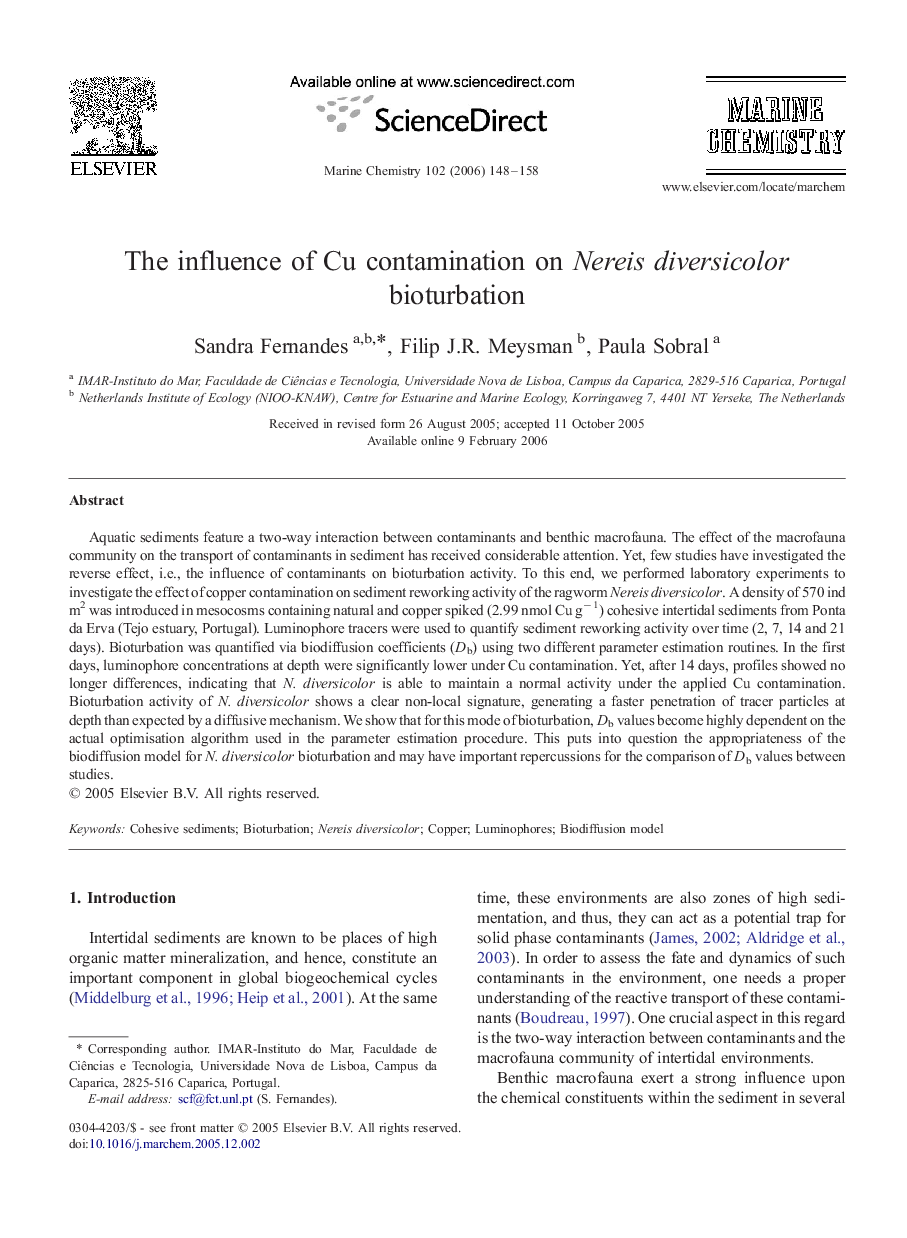| Article ID | Journal | Published Year | Pages | File Type |
|---|---|---|---|---|
| 1262653 | Marine Chemistry | 2006 | 11 Pages |
Aquatic sediments feature a two-way interaction between contaminants and benthic macrofauna. The effect of the macrofauna community on the transport of contaminants in sediment has received considerable attention. Yet, few studies have investigated the reverse effect, i.e., the influence of contaminants on bioturbation activity. To this end, we performed laboratory experiments to investigate the effect of copper contamination on sediment reworking activity of the ragworm Nereis diversicolor. A density of 570 ind m2 was introduced in mesocosms containing natural and copper spiked (2.99 nmol Cu g− 1) cohesive intertidal sediments from Ponta da Erva (Tejo estuary, Portugal). Luminophore tracers were used to quantify sediment reworking activity over time (2, 7, 14 and 21 days). Bioturbation was quantified via biodiffusion coefficients (Db) using two different parameter estimation routines. In the first days, luminophore concentrations at depth were significantly lower under Cu contamination. Yet, after 14 days, profiles showed no longer differences, indicating that N. diversicolor is able to maintain a normal activity under the applied Cu contamination. Bioturbation activity of N. diversicolor shows a clear non-local signature, generating a faster penetration of tracer particles at depth than expected by a diffusive mechanism. We show that for this mode of bioturbation, Db values become highly dependent on the actual optimisation algorithm used in the parameter estimation procedure. This puts into question the appropriateness of the biodiffusion model for N. diversicolor bioturbation and may have important repercussions for the comparison of Db values between studies.
